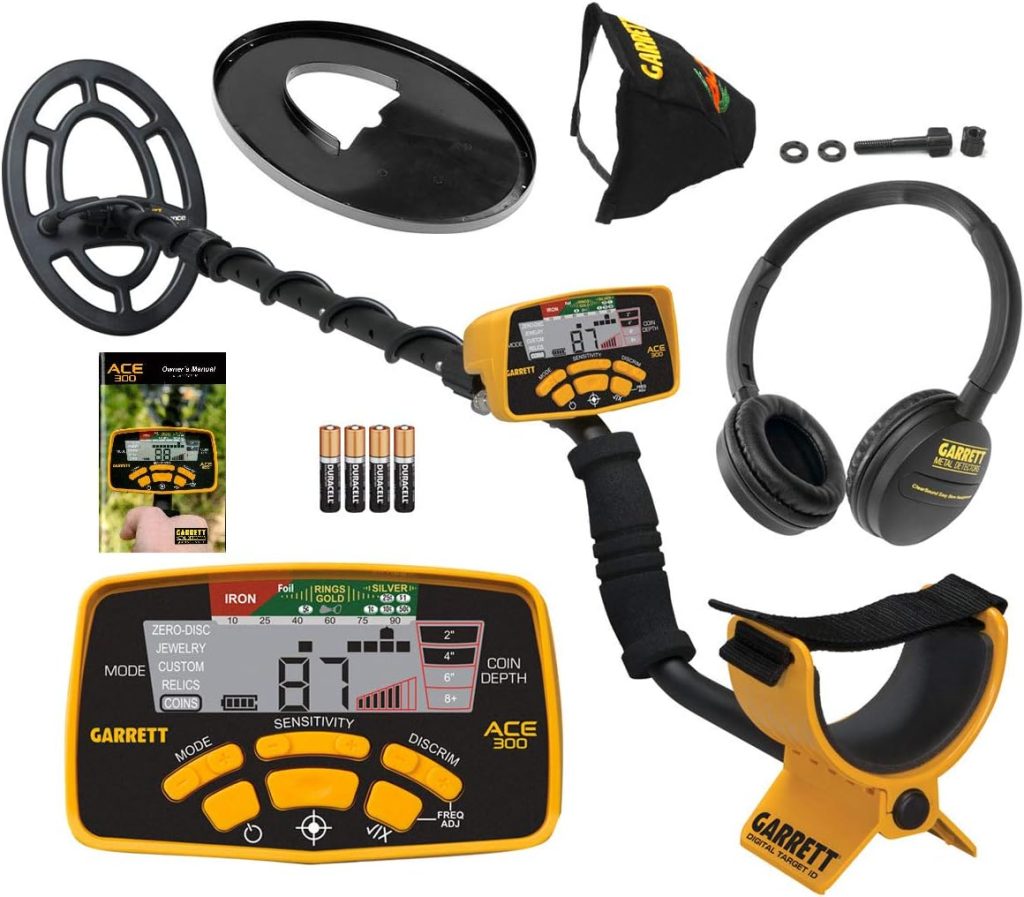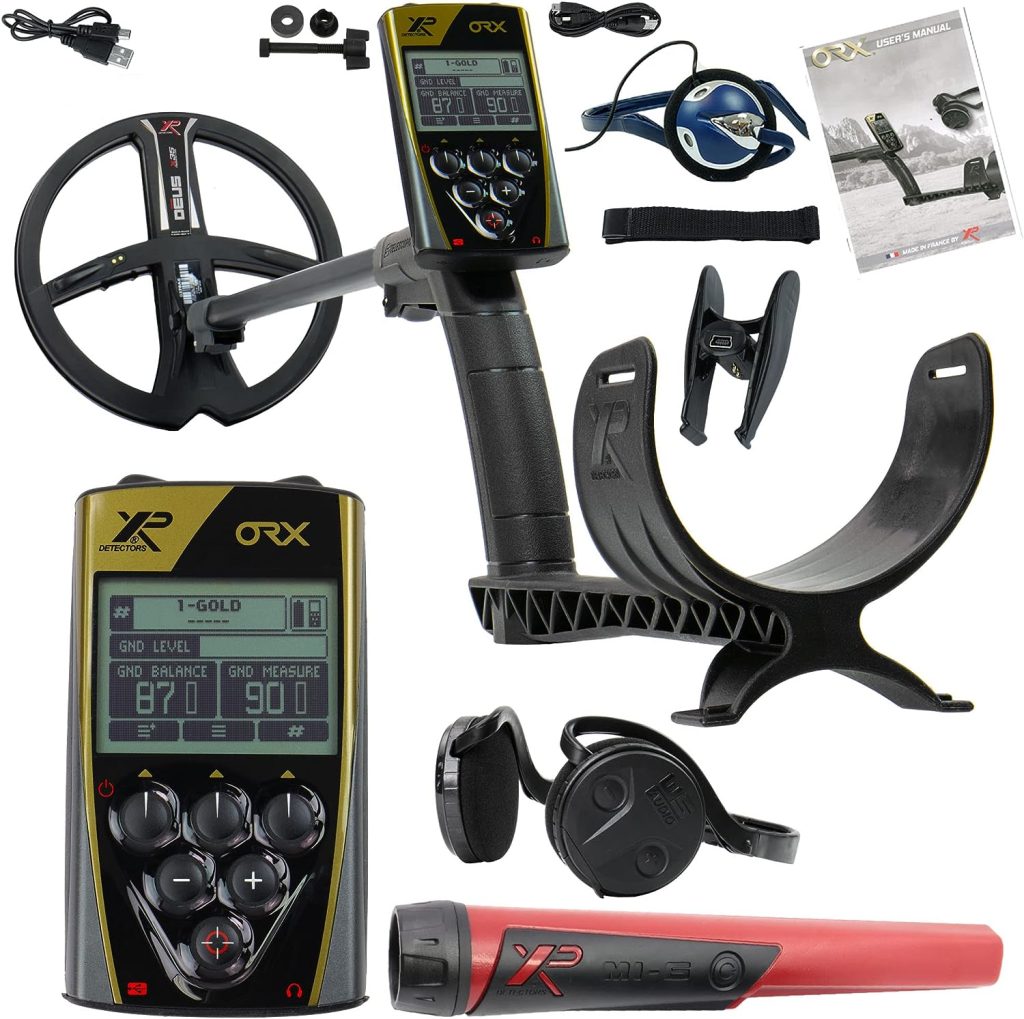Introduction to Top Metal Detectors
Definition and Purpose
Top metal detectors: Metal detectors are sophisticated electronic devices designed to detect the presence of metal objects buried underground or hidden within various materials. These instruments employ advanced technologies to generate and interpret electromagnetic signals, enabling users to locate a wide range of metallic items with accuracy.
The primary purpose of metal detectors is to aid in the exploration and recovery of valuable artifacts, coins, jewelry, and other metallic treasures. However, they also play vital roles in security settings such as airports, prisons, and public events where their use helps identify potentially dangerous objects.
Brief History of Metal Detectors
The concept of using electromagnetism for metal detection dates back to the early 19th century. The first notable attempt was made by Alexander Graham Bell in 1881 when he developed an electromagnetic device designed to locate a bullet lodged in President James Garfield’s body.
However, it was not until the early 20th century that practical metal detectors were introduced. In 1925, Dr. Gerhard Fisher invented the first portable metal detector known as the “Metalloscope.” This pioneering device utilized radio frequency oscillation principles to detect metallic objects buried under the ground or concealed within non-metallic materials.
Fisher’s invention laid the foundation for subsequent advancements in metal detection technology. During World War II, metal detectors played a crucial role in locating landmines and unexploded ordnance.
They were further refined for military purposes during this period. Following the war, interest grew in using these devices for civilian applications such as treasure hunting and archaeological excavations.
With rapid technological progress over the decades, modern-day metal detectors have become highly advanced tools capable of offering unparalleled precision and discrimination capabilities across multiple industries.
Types of Metal Detectors
Very Low Frequency (VLF) Detectors
VLF detectors are among the most common and widely used metal detectors in the world. They operate by utilizing two distinct coils: a transmitter coil and a receiver coil. The transmitter coil emits a low-frequency electromagnetic field into the ground, and when this field encounters a metal object, it creates an eddy current within that object.
This eddy current generates its own electromagnetic field, which is then detected by the receiver coil. The detector’s circuitry analyzes the changes in this electromagnetic field to identify the presence of metal.
One advantage of VLF detectors is their ability to discriminate between different types of metals. By adjusting the discrimination settings, users can choose to ignore certain types of metals while focusing on others.
This feature allows for more efficient treasure hunting as it reduces false signals from unwanted items such as nails or aluminum foil. However, VLF detectors may struggle with accurately identifying targets in highly mineralized soil or areas with high levels of electromagnetic interference.
Pulse Induction (PI) Detectors
PI detectors operate using pulses of electrical currents rather than continuous waves like VLF detectors. These devices utilize a single coil that acts as both a transmitter and receiver.
The pulse induction technology works by briefly energizing the coil with an electrical current, generating a magnetic field around it. When this magnetic field collapses after each pulse, any metal objects within range create an echo signal that is detected by the receiver coil.
One significant advantage of PI detectors is their ability to penetrate deep into various soil types and handle mineralization challenges effectively. They are particularly useful for detecting large metallic objects at greater depths compared to other types of detectors.
Additionally, PI detectors are less affected by highly mineralized soils or saltwater environments than VLF models; therefore, they excel at beachcombing and underwater treasure hunting. Conversely, one drawback of PI detectors is their reduced ability to discriminate between different types of metals accurately.
Beat Frequency Oscillation (BFO) Detectors
BFO detectors operate using a simple yet effective principle. They consist of two coils operating at slightly different frequencies—one coil acts as a transmitter, while the other functions as a receiver. When the coils’ frequencies are close enough, but not identical, their electromagnetic fields generate an audible beat frequency.
This frequency changes when metal objects are detected in the search area. Advantages of BFO detectors include their relative simplicity and affordability compared to VLF and PI models.
They are easy to use, making them suitable for beginners or casual metal detector enthusiasts. Furthermore, BFO detectors perform reasonably well in highly mineralized soils and can effectively detect larger metal objects such as coins or relics.
However, they often lack the advanced features and target discrimination capabilities found in more sophisticated detectors like VLF or PI models. By understanding how each type of metal detector works and considering their respective advantages and limitations, users can make informed decisions when selecting the most suitable detector for their specific needs and applications.
Features and Components of Top Metal Detectors
Metal detectors come equipped with various features and components that enhance their performance. Discrimination modes, sensitivity adjustments, and coil size and shape options play a significant role in the effectiveness of a metal detector.
Discrimination Modes
One crucial feature of advanced metal detectors is their discrimination modes. These modes allow users to differentiate between different types of metals, such as ferrous (iron-based) and non-ferrous metals. By using target ID technology, detectors can provide information about the probable metal composition of a target.
a) Ferrous vs Non-Ferrous Metals: Metal detectors with discrimination modes can distinguish between ferrous and non-ferrous metals based on their electrical conductivity.
This feature is particularly useful for treasure hunters who want to avoid digging up undesirable items like nails or soda cans while searching for valuable artifacts or coins. b) Depth Indicator:
Many modern metal detectors feature a depth indicator that estimates how deep the detected object lies underground. This information helps users assess whether it’s worth digging for a particular target or if it’s likely to be too shallow or deep to bother with.
c) Visual Display vs Audio Tones: Different metal detectors employ various means to convey information about detected targets.
Some models use visual displays that show numerical readings or graphical representations of the detected object’s properties, while others rely on audio tones that vary in pitch or intensity based on the target’s characteristics. The choice between visual display or audio tones depends on user preference and ease-of-use factors.
Sensitivity Adjustments
Sensitivity adjustments allow users to fine-tune their metal detector’s performance according to specific search conditions and target types. Ground Balancing: Ground balancing is a vital sensitivity adjustment feature found in high-quality metal detectors.
It helps compensate for mineralized soil conditions that can cause false signals or reduce detection depth. There are two types of ground balancing:
a) Automatic vs Manual Ground Balance: Automatic ground balance adjusts the detector’s sensitivity to maintain optimal performance as the user moves across different soil types.
On the other hand, manual ground balance requires users to adjust the detector based on their knowledge of the soil’s mineralization levels. b) Tracking Ground Balance:
Some metal detectors offer tracking ground balance, a feature that continuously adjusts the device’s sensitivity as it scans different soil types. This feature allows users to maintain optimal performance without manual adjustments.
Coil Size and Shape Options
The size and shape of a metal detector’s coil can significantly impact its detection capabilities in various environments and for different target sizes. DD Coils vs Concentric Coils: Metal detectors typically come with either DD (Double-D) or concentric coils.
DD coils are popular for their superior performance in mineralized soils and provide better depth penetration compared to concentric coils. Concentric coils, on the other hand, offer better target separation, making them ideal for areas with high trash content or closely located targets.
Top Metal Detector Brands in the Market Today
When it comes to top-performing metal detectors, several brands dominate the market due to their exceptional product lines and innovative technologies.
Garrett Metal Detectors
Garrett is renowned for producing high-quality metal detectors suitable for both beginners and professional treasure hunters. Their product line includes a wide range of models designed for various applications such as coin hunting, relic hunting, and gold prospecting.
1: Overview of Garrett’s Product Line:
Garrett offers metal detectors like the Ace series that cater to entry-level enthusiasts seeking affordability without sacrificing performance.
For more advanced users, they offer models like the AT Pro or AT Max, known for their waterproof capabilities and superior discrimination features.
2: Notable Features and Technologies:
Garrett metal detectors often incorporate advanced features like Iron Audio, which allows users to hear discriminated iron targets and make informed digging decisions. Additionally, their models may include digital target ID displays, multiple search modes, and wireless audio technology for enhanced convenience.


Minelab Metal Detectors
Minelab is a renowned brand known for its cutting-edge metal detection technologies. They offer a wide range of detectors that are popular among serious detectorists looking for superior performance in challenging conditions.
1: Overview of Minelab’s Product Line:
Minelab’s product line includes detectors such as the Equinox series, featuring multi-frequency technology that excels at detecting small targets in highly mineralized soils. Their flagship model, the CTX 3030, offers exceptional depth and advanced target discrimination capabilities.
2: Notable Features and Technologies:
Minelab detectors often incorporate innovative technologies like FBS (Full Band Spectrum) or MPS (Multi Period Sensing), which enhance their ability to identify desirable targets while minimizing false signals caused by ground mineralization or trash items.


Fisher Research Labs
Fisher Research Labs has a long-standing reputation for producing reliable metal detectors suitable for both hobbyists and professionals alike. Their products are known for their durability and performance in various environments.
1: Overview of Fisher’s Product Line:
Fisher offers a diverse range of metal detectors catering to different user needs.
From entry-level models like the F22 to high-end devices like the Fisher F75+, they strive to provide excellent quality across all price ranges.
2: Notable Features and Technologies:
Fisher metal detectors often feature advanced features such as digital target identification systems with visual displays or audio tones. Some models offer adjustable sensitivity settings, multiple search modes, and built-in pinpointers for precise target location.


Applications for Metal Detection Technology
Metal detection technology finds widespread use beyond the realm of hobbyist treasure hunting. Various industries and sectors benefit from the capabilities offered by modern metal detectors.
Conclusion: Metal detectors are indispensable tools with a wide range of features and technologies that enhance their performance.
Discrimination modes, sensitivity adjustments, and coil options contribute significantly to their efficiency in detecting valuable metals while ignoring unwanted targets. Top metal detector brands like Garrett, Minelab, and Fisher Research Labs offer exceptional product lines with innovative technologies tailored to different user needs.
Whether it’s for treasure hunting, archaeological excavations, security screenings, or industrial applications, metal detection technology continues to evolve and provide invaluable assistance in various fields. Embrace the excitement of exploration and discovery as you wield one of these remarkable devices on your next adventure!